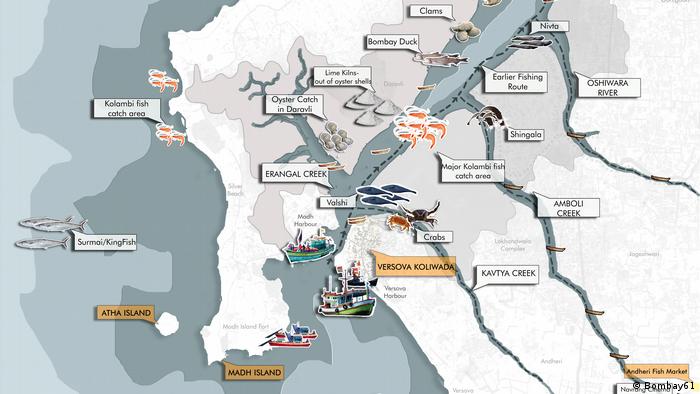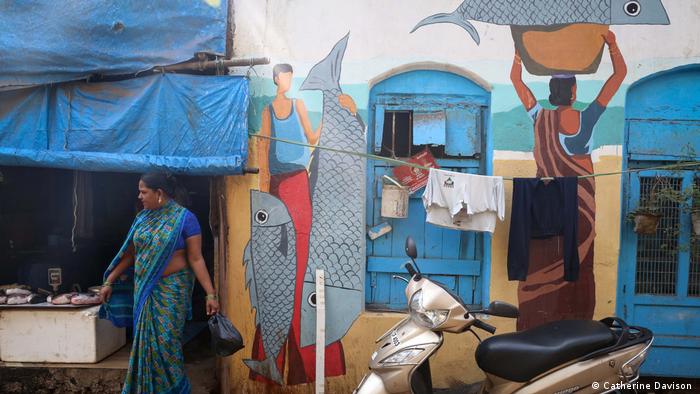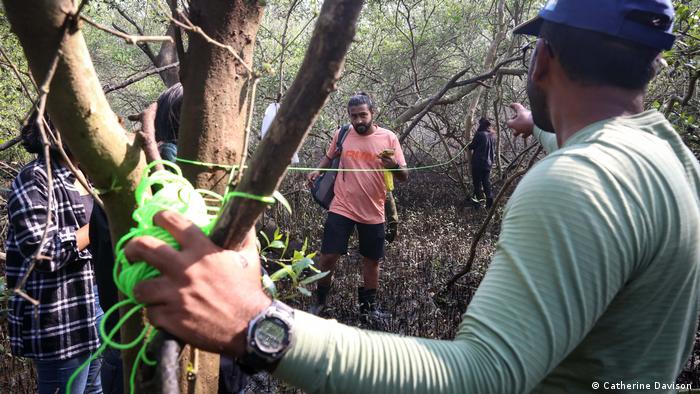Vikas Koli’s wooden vessel winds through Mumbai’s mazes and creeks, while he watches intently at the map on a smartphone.
India’s financial center, the city is a dense urban sprawl that houses more than 20 millions people. On the shore to Koli’s right, concrete slabsrise upfrom land reclaimed from the creek to build a boat jetty for commuters; upstream, a block of high-rises looms on the horizon.
The map does not show Mumbai’s modern landmarks. Instead, the map shows a simple illustration of a fishing vessel and two crabs, along with one of the many creeks that divide the megacity.
Vikas Koli believes the map tells the story about a lost past. Conceptualized by urban design studio and think tank Bombay61, it locates points along old coastal fishing villages, or “koliwadas,” which were important sources of fish and crab before the city expanded.
Redefining development
Bombay61 hopes maps will inspire nostalgia among locals like Vikaskoli and a greater appreciation of their surroundings. Their efforts to highlight livelihoods, natural systems, and other aspects are part of a larger movement that includes climate activists and urban designers who look back to Mumbai’s history for an alternative vision of the future.
“The water quality was good, some 20 or 30 years ago, and they used to get some fish over here,” Koli remembers, pointing at the crab on the map and the corresponding spot on the riverbank.
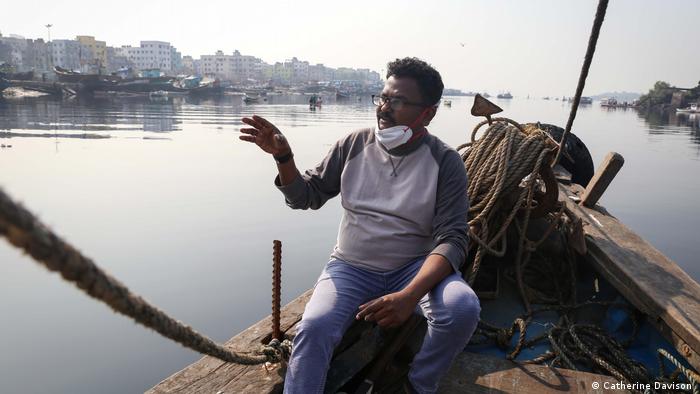
Vikas Koli illustrates how untreated water and pollution can lead to decreased crab catches, and loss of livelihoods
According to legend, they were the first inhabitants of Mumbai, and the Koli community to whom he belonged was a fishing community. Today, they still have a close relationship with the creeks and mangrove forests.
In recent years, however, plastic and effluent have polluted the water, causing damage to mangroves as well as the ecosystems that depend on them. The catch has declined. “Mumbai used a place where fishermen owned it. But now fishermen are getting displaced,” laments Vikas Koli. “That is Bombay’s saddest story,” he says, using the former name of Mumbai.
The city is saved from the sea
Mumbai was originally a collection of islands. It was built on land that was reclaimed from sea during the British colonial period. As the population boomed, competition for space fueled development projects focused on increasing infrastructure and housing density.
But these have often come at the expense of natural ecosystems threatening the survival of the city itself. Mumbai floods every year due to heavy monsoon rainfalls. This is because of dense concrete construction that blocks drainage. Encroachment by property developers onto protected mangrove forest land and flood plains have also damaged the city’s natural barriers against storm surges.
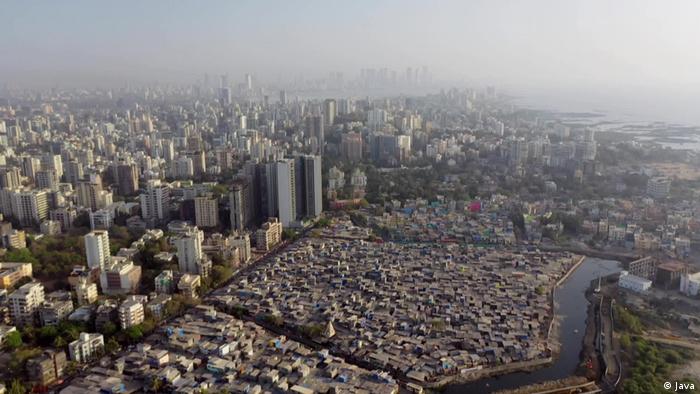
Mumbai’s rapid development was a major achievement, but it also brought with it increased vulnerability to unpredictable natural forces.
These problems could be exacerbated by climate change. Sea levels could rise by over a meter (more than 3 feet) before the end of the century, inundating Mumbai and other major coastal cities such as Bangkok, Jakarta and New Orleans,According to a 2019 study from the Intergovernmental Panel on Climate Change (IPCC). Iqbal Singh Chahal, Mumbai’s municipal commissioner, Recently warned that if nothing changes, a large portion of the city would be underwater by 2050.
Making memories visible
For Bombay61 co-founder Ketaki Tare, looking to the past is key to facing up to the future.
Tare and JaiBhadgaonkar, the co-founder, hoped that by mapping the memories of the community, they could reverse what American psychologist Peter Kahn had called “The Greatest American Psychological Disaster.” “Environmental generational amnesia.” where young people normalize their pollutedenvironment.If concrete development, pollution and annual floods become “the new normal,” explains Tare, it is difficult to envision an alternative.
The project also produced wall murals that depict scenes from local stories, as well as a photo archive of the coastline and creeks.
Debi Goenka is the executive trustee of Conservation Activist Trust. She agrees that there is a need to find a new approach. “The bottom line is that any project that destroys your natural infrastructure to replace it with artificial infrastructure, in my mind, is not developing,” he says.
Mangrove forests must be protected
This tension in urban planning is evident in the treatment of city’s mangrove forest. Goenka has been pushing for policies to ban development in the city’s flood plains and mangrove forests for many years. Between 1990 and 2001 nearly 40% of Mumbai’s suburban mangroves were destroyed. One estimate.
In 2012, the Mangrove Cell was formed by increasing public pressure on state government. The Mangrove Cell, India’s first government agency, was created in 2012 after increasing public pressure on the state.
“Land is a major problem in a city such as Mumbai. So, there were initially a lot of problems,” says Sheetal Pachpande, ecologist and deputy director of projects at the Mangrove Foundation, a subsidiary of the government department.
Through a combination trenches and chainlink fences to protect her land, dedicated forest rangers and outreach and education, she claims that “today 99 percent of encroachments” are gone [on mangrove forests]Mumbai was removed.
They also claim to have planted over 8,000,000 mangrove saplings.
Action in the community and ownership
Goenka believes however that such efforts are only possible if there is public participation, which Bombay61 has called “participationasa mode of development.” By incorporating memory into urban design, their projects aim to help the Koli revive a sense of ownership over their surrounding environment motivating them to protect it.
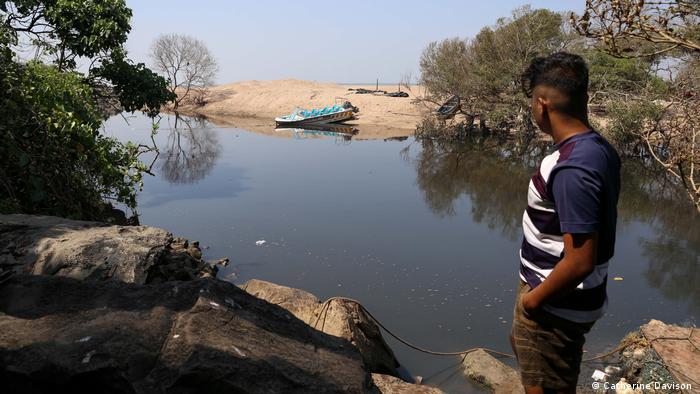
Koli hopes that tourist boat tours of mangroves will provide an additional income source for the Koli community
Future project ideas include running mangrove tours in order to increase public awareness of their benefits and a scheme that helps the Koli collect plastic trash in nets strung across creeks.
Tare explains that the Koli will be able simultaneously to generate incomes while protecting their environment. Vikas Koli has already started tours through the Koliwada, showing people the creeks and wall paintings and advocating for their preservation.
“They know the mangroves verywell,they know the species also,” explains Tare. “Why don’t we see these communities as the guardians of these natural resources?”
Holly Young edits

